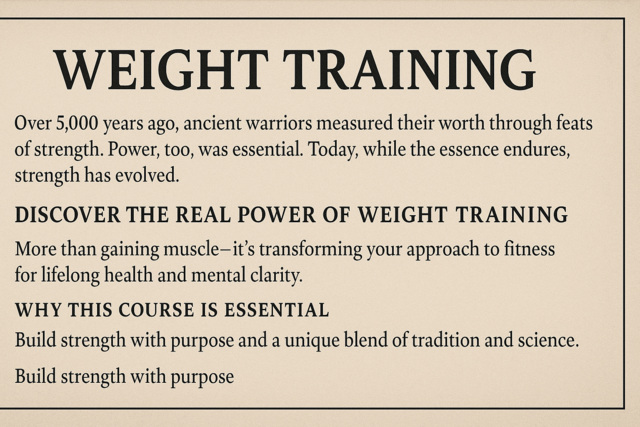Part of an effective establishment is the development of true teamwork and team spirit. In all the interviews that I conducted on this subject, the belief that teamwork is the key to the ultimate success makes understanding this concept critical.
An interview with Eric is recorded below. Eric began working in a fine dining establishment, first as a busser, and then up to the level of server within a few weeks. He learned very quickly what it meant to be part of a successful team, and that when everyone works together toward a common goal, everyone ends up more successful.
Question: Eric, you have worked as a waiter for how long?
Eric: I started working in a diner when I was in high school as a busser. It was hard work and I found that there were people there who were just unhappy and angry all the time. I decided to try to change things by being extra cheerful and helpful. I was hoping to move up to the position of waiter, but those hopes were crushed when I discovered that the management only hired waitresses to serve. The guys either cook or bus tables. I knew that the real money was in being a waiter, so I started looking around. I actually had an interview with a hiring manager at a fine dining French restaurant and he said he'd be in touch. To my surprise, he shows up at the diner to have lunch one day, and just spends his time there watching the dynamics of the restaurant.
Question: Did that make you nervous?
Eric: Oh yeah! It really did! But I just did my job, kept my demeanor, and was helpful and cheerful as I usually am. He called me over to the table and asked why I wanted to work for him. I told him that I wanted to be a waiter and I couldn't do it here. He told me he liked my attitude and to start as a busser the next evening. For two weeks I bussed at both places so that I could put in my two weeks notice and I was really tired; but once I started working for Gary I realized that I did not want to work in a diner for the rest of my life. I really wanted to learn about good food and good wine and thought I could do a good job at it.
Question: What was the biggest difference between the two restaurants?
Eric: The teamwork. At the diner, it was like it was each man for himself. Once I went to work for Gary, he made it very clear that in order to stay employed there, we had to be part of a team and work very effectively as a team. All the "every man for himself" thought had to be erased from my head.
Question: What else was different?
Eric: As a busser, I don't get tipped directly, but I get a percentage of the server's tips. The happier the customer is, the more the server makes. At the diner, every waitress tipped out, but no one actually checked the amount of their tips, so there were times I felt gypped. At Michelle's every server puts all their tips in an envelope and the accountant splits everything out. Bussers get 10 percent, the chef gets 10 percent, the bartenders get 10 percent, the hostess gets 5 percent, and the cocktail waitress gets 5 percent. I get to keep only 60 percent of my tips, but my tips are so much more now that I really don't mind. After all, everyone working together makes us all more successful.
Question: Tell me more about teamwork.
Eric: Okay. Let's say that I have two tables at the same time, and their meals come up at the same time. I have a little bit of leeway when choosing which meals to serve first, because I know the menu, I know the foods, I look at the meals after people are done to see how they fare after 45 minutes. I pretty much know which meals can wait and which ones can't. But, if I have two two-tops, or two four-tops whose meals are all ready at the same time, I need help. You never, EVER, serve a table half the meals at a given time. Once you serve, you finish the service for that table. If two tables need to be served at the same time, obviously I need some help. I ask the expediter, another server, or the manager, "Can you initiate for table two? I'll finish it as soon as I'm done with table four." Without that help, I would have one table pretty upset with me because their food comes out cool, their cream sauces are breaking, and they have a right to be upset. They pay a lot to eat here -- they should get a perfect meal every time. If your team works well together, they will get a perfect meal every time.
Question: So, your team really revolves around the other servers, the manager, and the expediter?
Eric: No, it's actually bigger than that. I found that I had to make friends with the kitchen staff, the main chef, the sous chef, and the line cook. In order for my food to come out on time, they all have to be in sync. I have found that by complimenting the chef on certain platings, then he becomes more relaxed and proud of his work. Most of the time your chef is really proud of his work, and by me recognizing his effort, this is his reward, because very few people actually send word back to the chef that it was a fantastic meal. Everyone in the restaurant has to have the buy-in; they all are looking for the same result, and we all work to get it.
Eric has made a great living out of waiting tables, starting in high school. He is now also a very successful engineer, and has decided to wait tables in addition to his engineering work because he really enjoys getting involved with people on a personal level, and he finds that waiting tables is a very satisfactory way to make additional money. Eric works four nights, five hours, and makes over $700 in tips during that time.
Bussing:
Every eating establishment will have individuals who bus tables. Generally speaking, this means you are responsible for clearing off tables and chairs after the customers have finished dining. They are absolutely responsible for keeping the front of the restaurant clean and inviting. They are also responsible for greeting the guests appropriately. This is very important, and yet, many times I have been treated as if I were invisible by the busser. Such individuals will likely hold their busser position for a long time and never move up in the ranks.
Bussers also communicate with the host(ess) and servers to help guarantee the customer's needs are adequately met. Bussers usually see to the state of the restrooms, floors, and windows during their shift. In some establishments, bussers also serve hot and cold non-alcoholic beverages, refill bread baskets, fetch extra silver and napkins, as required. In some instances, the customer will have more contact with the busser than they will with the server.
The next time you eat out, evaluate the performance of the bussers. If they see their job as lowly and demeaning, then they will behave in that manner. If they see their job as important, valuable, and instrumental to moving up in the ranks to server, they will behave in that manner. What one believes often becomes reality. Always look for the best in your situation, and always work so that you are part of a team.
Expediting:
Not every restaurant has an expediter, but those that do have a very valuable team member. Their basic job is to check the food that is up in the window against the ticket and ensure it is correct. They are to see to it that any special orders have been carried out, i.e. sauce on the side, etc., and then they deliver the correct food to the proper table.
Expediters can frequently be valuable, because they are not the ones who place the order, but they are the ones who communicate with the kitchen and see to it that the orders are carried out. If there are errors in the order, the expediter does not get emotional about being wrong; they did not put the order in. This helps to keep tempers cool and emotions out of the running of the business.
This is the way that all the other staff gets rewarded for their hard work and teamwork efforts. Tipping out means that the waiter or waitress will take a certain percentage of their tips and give them to the busser, the expediter, hostess, kitchen staff, etc. as is proscribed by your establishment.
In a diner situation, tipping out usually means the server pays both the busser and expediter 10 percent each out of the tips for that shift. Many places rely on the server being absolutely honest and tipping out without being checked for accuracy. The drawback to this method is that if the server is upset with the busser and does not feel that there was adequate assistance, the busser might be shifted out of the appropriate amount of tip.
What happens then is that the busser will develop a bad attitude, believe they are being cheated by the waitress and will work less and less effectively for that server. This is a downward spiral, and destroys the idea of teamwork.
Other establishments have a much more systematic approach that ensures fairness to all members of the team. In such establishments, every server is required to turn in all tips in a packet with their name on it. The accountant or bookkeeper will then take the total amount of the server's tips, enumerate who was working on that shift, and who is to be tipped out by that server, and then allocates those tips appropriately. In this manner, every member of the team is adequately compensated.
You can see now, how working together as a team will give everyone the greatest opportunity to maximize on their tips. When everyone works together to make each shift work as smoothly as possible, then everyone benefits. When a worker chooses to not be helpful, everyone suffers. Usually, in finer restaurants, such individuals do not last very long.
Accidents happen anywhere, anytime. Your job, when you work in a restaurant situation, is to try to make sure that accidents have less of a chance of actually happening. This means you need to see problems and handle them before they become a real problem. Here are just a few ideas of things to keep in mind as you work:
� If food or liquid is spilled, get it cleaned up immediately.
� Do not stack plates so high that they will tip over if bumped.
� Store heavy items on lower shelves, so there is no back strain when accessing
them, and no danger of them falling on top of you.
� Get Red Cross training for first aid, CPR, and the Heimlich maneuver.
� Have the Fire Department show you how to use a fire extinguisher.
� OSHA (Occupational Safety and Health Agency) is a federal agency that
oversees safety in the workplace. See www.OSHA.gov if you need more
information.
� Enter through the "in" door and exit through the "out" door.
� Watch your fellow employees, so that you do not collide when in a hurry.
� Do the same for the customers; do NOT run into them because you are in a
rush.
� Always warn the customer when the plates or handles are hot.
� Use dollies or carts to transport heavy items.
� Do not carry too many items at a time; take several trips.
� Always use proper lifting techniques.
� Keep things out of the paths of the foot traffic.
� Know how to recognize signs of choking, and how to assist the customer.
Over 4,000 people a year die of choking.
� Hazardous chemicals must be kept in their original containers and kept away
from food storage.
� Immediately report accidents to management.
� Workplace safety is the job of every employee in the establishment.
� Carefully load trays to prevent overloading and/or being off balance.
� Do not leave hazardous chemicals near heat or a source of flame.
� Never mix chemicals.
� Know who to call in case of emergency.
� Read labels of all chemicals before using them; if they are especially
dangerous, you do not have to use them. Bring this to your manager's
attention.
� Always wear nonporous gloves and eye goggles when working with sanitizing
chemicals and other cleaners.
� Know how to properly dispose of all hazard materials containers.
� A safe environment will help you to keep things safe for your customers.
HACCP:
Hazard Analysis of Critical Control Points is a system that helps to monitor the food service process to minimize the risk of food-born illness. Each step in the food service process has the potential for multiple hazards, and the HACCP is a source of information to reduce to a minimum such problems. The hazard analysis will identify and evaluate critical control points in the process where bacteria or other harmful organisms can grow, or where food can possibly become contaminated.
You are responsible for protecting your customers' safety by serving safe and healthy food. All employees must be educated on the proper handling of food, and the motivation to have them put what they learn into practice.
A recent article on AOL talked about ways that restaurants are trying to save money. Some of these included such techniques as taking cracker packets and coffee creamers out of the garbage, wiping them off and then serving them to another table. This is very much against the rules. It is one thing to try to save money. It is quite another where you are intentionally putting your customers at risk.
With HACCP, you will move through seven steps:
| Assess the possible hazards.
Identify the CCP's -- the critical control points. Set the critical limits. Monitor the critical control points. Corrective action is to be taken as necessary. Keep good records. Evaluate your system's effectiveness. |
Bacterial Cross-contamination:
Your job in a restaurant is to avoid bacterial cross-contamination. One of the most common causes of food-borne illness is the transfer of bacteria to food from either someone touching it, or by exposing it to other contaminated food.
For example: Do not use a cutting board for raw chicken for chicken enchiladas and then cut up raw lettuce, onion, and tomato for the garnish for the enchiladas on the same cutting board. Chicken is highly contaminated, and must be cooked to a specific temperature in order to be rendered safe. If raw vegetables come in contact with the juices of the raw chicken, the customer will likely become extremely ill.
Bacterial cross contamination comes from:
� food to food contamination
� hand to food contamination (not washing hands after the bathroom)
� equipment to food (using a knife for raw chicken, then raw lettuce)
� unsanitary practices (tasting food with fingers)
� Foods kept between 45� and 140� are in danger; keep hot foods hot, and cold
foods cold.
� Thawing foods must be done in the refrigerator, the microwave, or under
cold, running water.
Bacteriology 101:
Bacteria are everywhere. Most are invisible, seen only through a microscope. Bacteria need food, water, and warmth in order to survive. They will grow most rapidly between the temperatures of 85� and 100� F. The most difficult part about controlling bacteria is due to their infinitely rapid reproduction. They can actually double in number in about 15 minutes.The more bacteria present, the greater the chance that someone will fall ill due to the exposure. The only good thing is that bacteria cannot travel on their own. They need to be exposed to a substance in order to contaminate it.
Dangerous Forms of Bacteria:
There are several forms of bacteria that are highly dangerous.
Clostridium Perfringens can cause a poisoning effect. It is odorless, tasteless, and colorless, and almost impossible to detect. You cannot see it by looking at it. It is found in meat or seafood that has been cooked and then kept at room temperature for a while.
Clostridium Botulism is rare, but very lethal. It exists only in an anaerobic environment -- totally free of air. These are frequently found in home canned goods and all canned goods in which the seal has been compromised. Never buy canned goods that have dented cans; the seals may be compromised and you cannot see or smell botulism. Beware, it is deadly.
Staphylococcus is the most common source of food poisoning. It is found everywhere, and particularly in the human nose. Food that has been left out is at the greatest risk for staph contamination.
Salmonella bacteria is the source of another common food-borne illness that can cause severe diarrhea, fever, and abdominal cramps 12 to 72 hours after infection.
To keep bacteria under control, you must all be aware of them, what they are, where they come from, and how they spread. Then, every employee in a restaurant must see to it that nothing violates any health rules. Keep foods at the proper temperature. Do not allow sick people to work! This is very important: Sick people are teaming with bacteria.
Hygiene:
Personal hygiene is one of the best ways to keep bacteria from spreading. Hands must be washed multiple times throughout the day. Every time you touch your face, head, sneeze, etc., you must wash your hands. Basic handwashing techniques include:
� Remove all jewelry.
� Use the hottest water you can stand.
� Wet hands and forearms; soap and rub for 20 seconds.
� Use a brush for dirty nails.
� Rinse, again in very hot water.
� Dry with a single-use paper towel.
� Use a paper towel to open the door to the restroom.























